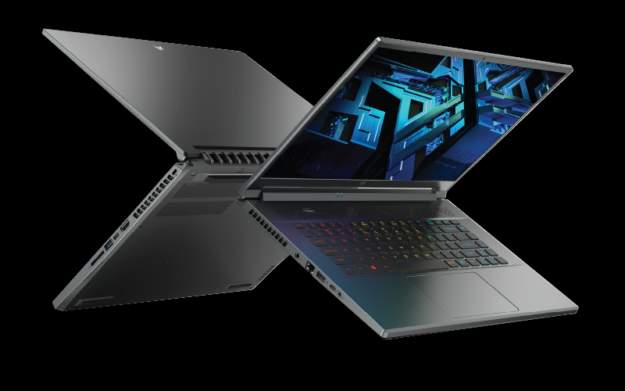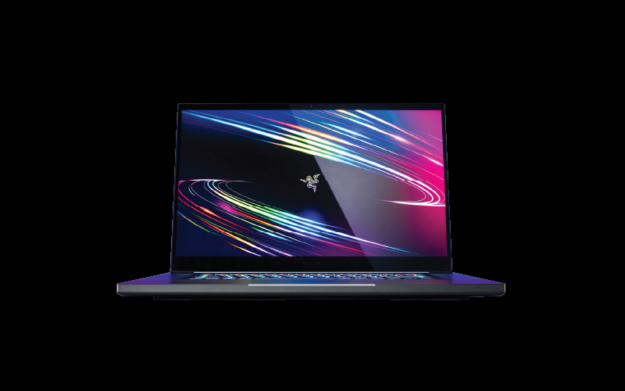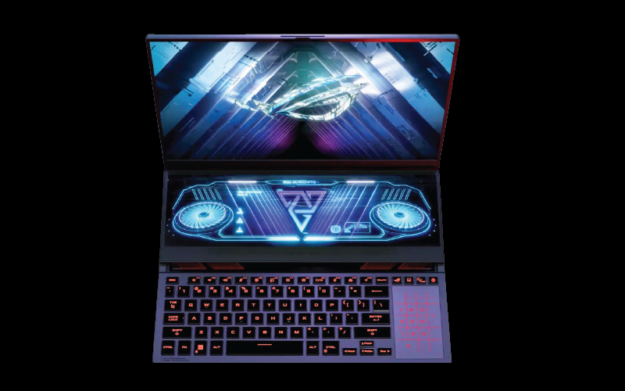All of Games 400 recommendations represent our editors’ opinions; we don’t endorse any products,
Gaming laptops are interesting because they’re both powerful and sleek. They’ve become thinner and lighter over the past few years, but that doesn’t mean they can’t handle either work or play. Gaming laptops are a way for laptop designers to get adventurous. They can use things like rotating hinges or customizability that you just wouldn’t see on other types of laptops.
It MIGHT be better to get a gaming notebook that can do calculations for simple tasks, but for smoother gameplay, it will most likely be worth the investment. You’ll still get enough juice for video encoding and 3D rendering, and you may be paying less.
What’s your budget?
When picking out a new laptop, the most important factor to consider is how much money you want to spend. No surprise there. The good news: There are some great deals for gamers of every budget coming out of this 2019 season. Particularly, we’re seeing some outstanding products under the $1000 mark such as D. Lower-priced PCs in this price range probably won’t feel as sturdy or powerful as expensive models, but should still be able to handle most games in 1080p at 60 frames per second. This is the absolute minimum you need for a decent gaming experience.
There are more expensive computers out there that are better for heavy work. One example is the ASUS Zephyrus ROG G14, which used to cost around $1,700 before they ran a promotion on it. It’s really expensive though and I don’t think you need to spend that much if you’re just doing schoolwork or writing a quick blog post for example. While the build quality isn’t comparable to higher-end models, you’ll get a nice upgrade of GPU and RAM for larger games. This laptop is perfect for anyone who wants high performance without paying the luxury tax, and it’s dependable enough that it should last a while. You can continue to game without being forced to upgrade shortly.
If you’re looking for the best gaming computer, then the Razer Blade might be what you’re looking for. It’s got great hardware and stays slim & sleek while still providing a lot of power. These are ridiculously expensive but they’re the best that’s out there. Lots of people don’t have a machine like this but if you’re into gaming and can afford it, it might be worth checking them out.
What kind of CPU and GPU do you want?
The answer to this question used to be easy, but there has been a big change in the market within the last few years. Previously all notebooks needed Intel with NVIDIA graphics, but now AMD is providing a new option – with their Ryzen notebook processors that are more appropriate for multimedia assignments. Intel 12th-gen processors are the best out there, and it’ll be great to see AMD step up its game. They’re also going to be cheaper than comparable Intel models.
AMD offers laptops some pretty amazing video cards, but they’re not the best when it comes to desktops. Their new Radeon RX 6000M GPU provides a lot of power for laptops though. It’s an old model but it still has some advantages. For example, AMD-powered notebooks won’t be able to achieve the same gaming performance as NVIDIA’s RTX 3070 and 3080 GPU.
NVIDIA graphics cards are pretty great. They can be found in practically any system and they make games look really good in the process. If you’re not sure what GPU to choose, just go with the one you know is best. RTX graphics cards also come with DLSS technology, which can upscale games to resolutions as high as 6K. A game like Destiny 2 can now be played with faster frame rates thanks to more responsive technologies like ultra-high refresh rate monitors. That’s useful because you can now take advantage of faster technology that is available on some new computers.
NVIDIA’s RTX 3050 is a decent entry point, but we think you’d be better off with at least an RTX 3060 for solid 1080p and 1440p performance. The RTX 3070, meanwhile, is the best balance of power & budget. With the help of NVIDIA’s DLSS and other technologies, your RTX 3080-powered PC can run any game in 4K and will even be able to handle anything you can put at it. If you want the ultimate power for your gaming rig, this is what you need!
I just wanna say that NVIDIA’s mobile GPUs aren’t an exact match for their more powerful desktop versions. One of the benefits of an ultrathin notebook is that you’ll be able to reduce power consumption. This means things like faster battery life, longer use-time between charges, and overall improved performance. However, there’s one downside: it may perform worse than you expect if other parts are identical.
What kind of screen do you want?
When it comes to judging gaming notebooks, start with screen size. Generally, a 15-inch laptop will be the best balance of mobility and immersion while a 17-inch model has more screen real estate but is heavier. Some 13-inch gaming laptops exist, but they’re typically more expensive than their slightly larger counterparts. There are also lots of 14-inch laptops available, like the Zephyrus G14 or Blade 14. They’re a bit bigger than most 13-inch models but still light enough to transport easily.
But nowadays, there are more factors to consider beyond the size of the monitor (although that’s still important). For example, refresh rates. You want your monitor to refresh at 60Hz and have a high vertical resolution if you want a comfortable viewing experience. You see, a color TV standard was introduced back in the day, with black & white televisions. But over the last few years, displays have changed a lot – and are now much better. Now, the bare minimum for gaming notebooks is a 120Hz 1080p screen. There are also faster panels that refresh 144Hz, 240Hz, and even 360Hz. All of this is in the service of making everything as smooth as possible on your display.
Gaming at higher refresh rates prevents screen tearing or other disruptions that might get in the way of your game. And for everything else, it leads to a better viewing experience. It’s true what they say about a high-quality monitor. It can be a completely different experience to scroll webpages on a 120Hz screen for example. Everything moves in what seems like slow motion and you don’t feel the same “jittering” you get when scrolling from one page to another on a slower device. Any of the monitors that go beyond 120Hz make gameplay feel even more responsive. If you’re competitive, this is for you.
These screen technologies need to be noted, but they are not the only ones out there. NVIDIA has G-SYNC and AMD has FreeSync. They’re both technologies that synch your screen with the rate at which pictures are shown on the screen. Game of Thrones would be an example of a TV with a refresh rate, while Horizon Zero Dawn is one good example of a video game that supports adaptive sync. That’s a nice bonus on a monitor with a high refresh rate; they aren’t necessary, but they can still make gameplay feel smoother.
Just to make this clear, these are all about LCD screens, not OLEDs. While OLED panels are the best option for TVs, they don’t work so well for laptops. The only models with an OLED display are currently limited to 60Hz, but some high-end models offer 90Hz. That’s true, but OLED displays have their own set of trade-offs. They have higher running costs because of their expensive organic materials and can only reach 4K or 3K resolutions. That’s still a lot when compared to traditional screens, which are limited to 1080p resolution. They have great contrast and black levels, but most gamers will be better off with an LCD. We think.
A few other takeaways:
- It pays to buy at least 16GB of RAM. And if you want to stream and do a ton of multitasking on your computer, consider getting more than 16GB.
- A common storage problem these days is juggling which games to keep. These days, I’d recommend having at least a 1TB SSD. That should be enough space to store Destiny 2 and a few other large titles. Some laptops can also take on a standard SATA hard drive. These are cheaper, hold more data, and make for an overall better alternative to M.2 drives in many cases.
- It can be tough to figure out if a product is a right fit for your system, but that can be hard when we’re in the middle of an epidemic. I’d recommend grabbing your preferred system from a retailer with hassle-free returns like Amazon or Best Buy. If it doesn’t suit you, you can always send it back for free.
- Here are some handy accessories to think about: a mouse, keyboard & headphones.
Whether you’re a hardcore gamer, ASUS ROG Zephyrus G14 is an excellent choice.
Starting price: $1,400

You should buy the Zephyrus G14 if you can’t tell. It’s really small, only 3.5 pounds, and it has AMD chips inside. But I would get the Ryzen 9 with an RX 6700M for $1,400–then it’ll be perfect :)While it doesn’t have a big 15-inch screen, this computer still looks great and has a fast 144 Hz refresh rate. We like the G14’s design, with a futuristic-looking but classic design. Some versions of the laptop have LED lights on the rear panel for extra cool points. The G14’s price has increased since it first debuted, but it remains one of the best gaming laptops out there. Plus, ASUS finally added.
The best budget option: Dell G15
Starting price: $800

Dell’s G5 laptops we’ve been big fans of since they came out a few years ago. Now called the G15, these start at under $1,000 and feature all of the latest hardware like Intel’s 12th-generation CPUs & NVIDIA’s RTX 30-series cards. The Ryzen processor is also found in some models of laptops. It weighs over 5 pounds, but it’s a nearly indestructible machine around the outside and despite not being able to take on powerful gaming computers like the RTX 3060, it can prove enough power for some gaming if you go with mid-range specs.
The best premium gaming laptop: Razer Blade 15
Starting price: $1,700

Razer continues to do a stellar job of delivering bleeding-edge hardware in a sleek package that would make Mac users jealous. The Blade 15 has just about everything you’d want, including NVIDIA’s fastest mobile GPU, the RTX 3080 Ti, as well as Intel’s 12th-gen CPUs and speedy quad-HD screens. Our recommendation? Consider the model with a Quad HD 165Hz screen and an RTX 3070 GPU for $2,050. You can easily save some cash by going for a cheaper notebook, but it won’t feel nearly as polished as the Blade.
A solid all-around option: Acer Predator Triton 500 SE
Starting price: $1,749

While we’ve seen some wilder concepts from Acer, like its 360-degree hinge-equipped Triton 900, the Triton 500 is a more affordable bread-and-butter option. This year, it’s bumped up to a 16-inch display, giving you more of an immersive gaming experience. It’s relatively thin, weighs just over five pounds, and it can be equipped with Intel’s 11th-gen CPUs and NVIDIA’s RTX 30-series GPUs. Acer’s build quality is as sturdy as ever, and it has most of the standard features you’d need in a gaming notebook.
The best way to go big: Razer Blade 17
Starting price: $2,399

If you loved the Razer Blade 15 but wish it were bigger, then ask yourself no more. The Blade 17 delivers all the desktop-level gaming pleasures you could want with a 17-inch screen and six pounds of weight, making it easier to take on the road. The Blade 17 is not the most affordable laptop in the world, but it’s worth it if you edit videos or need a bigger screen. It may be a bit too much for everyday use, but for someone who has these needs, it’s perfect.
For dual-screen multitaskers: ASUS ROG Zephyrus Duo 16
Starting price: $2,500

If you already know you need a dual-screen laptop, the Zephyrus Duo 16 is for you. It offers a high-quality 17” LED-backlit FHD (1920 x 1080) display and allows you to work with multiple screens with an intuitive Pivot mode so that if you’re multitasking on your laptop, your screen will never turn into chaos. It is powerful, and it has a massive 14-inch screen that makes multitasking while playing games and working easy. ・It has both the latest hardware for increased power (for example, the new AMD Ryzen chip) and graphics processing (NVIDIA’s new RTX 3000 GPU) ・Even though it can’t be portable, this is not a big concern as you can always stay connected to the internet while you work on it.






